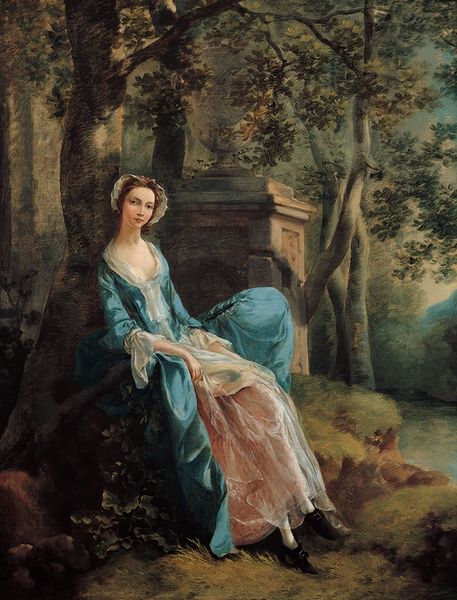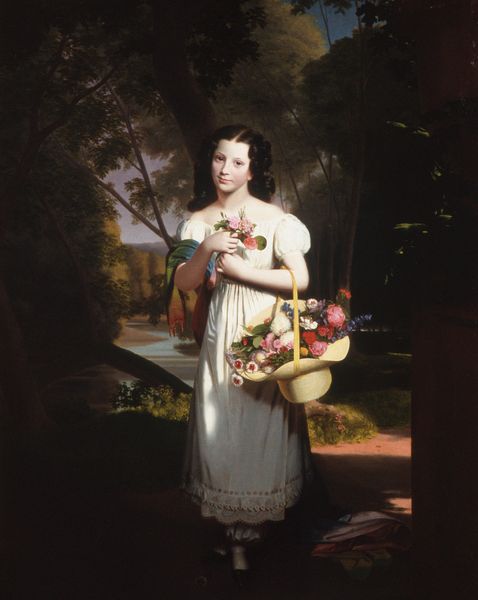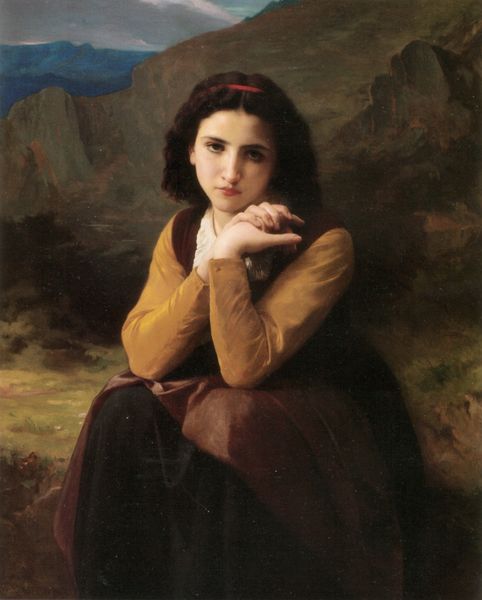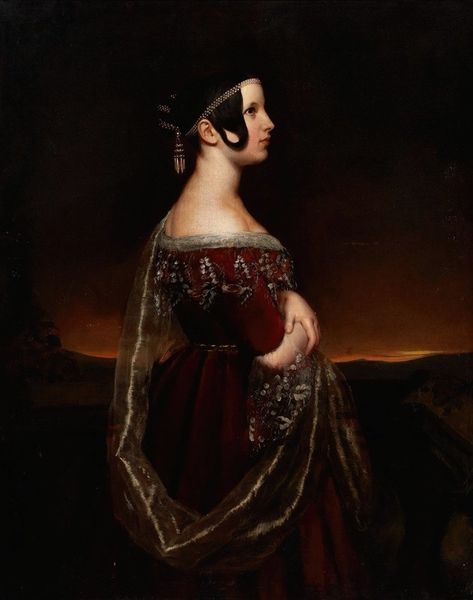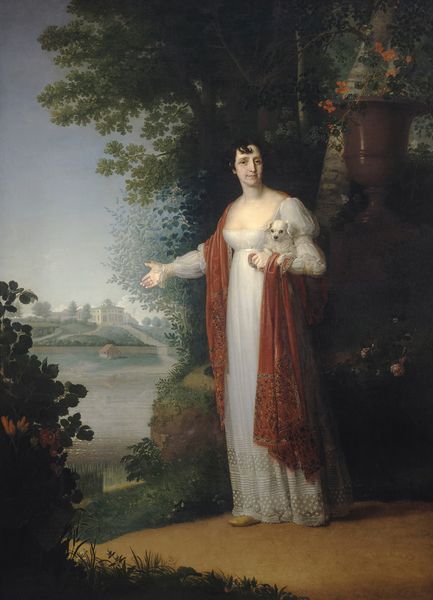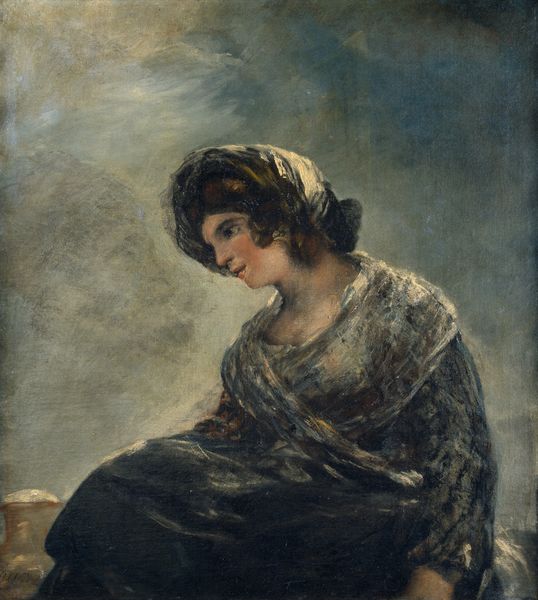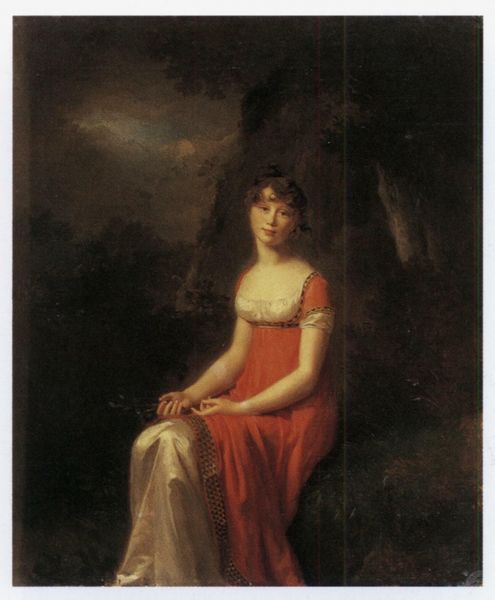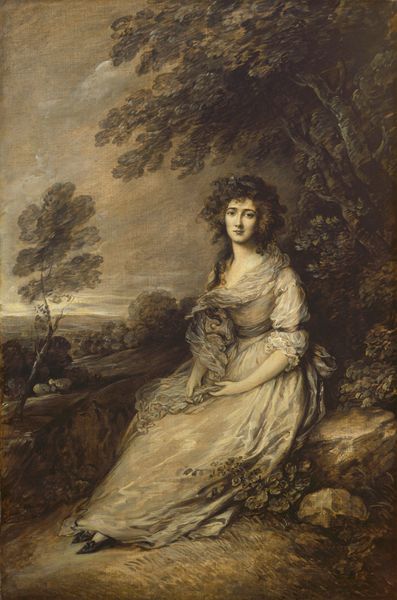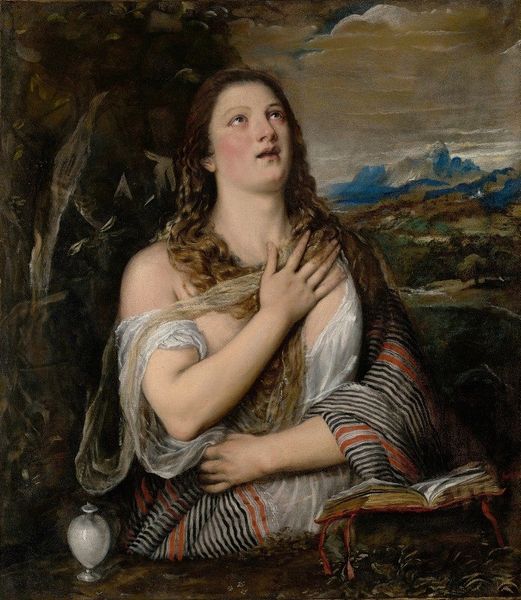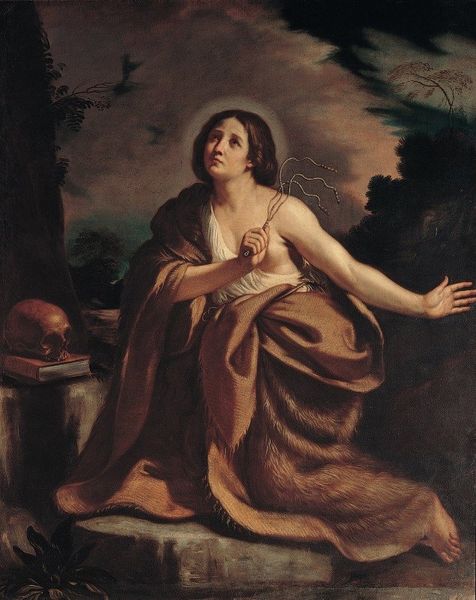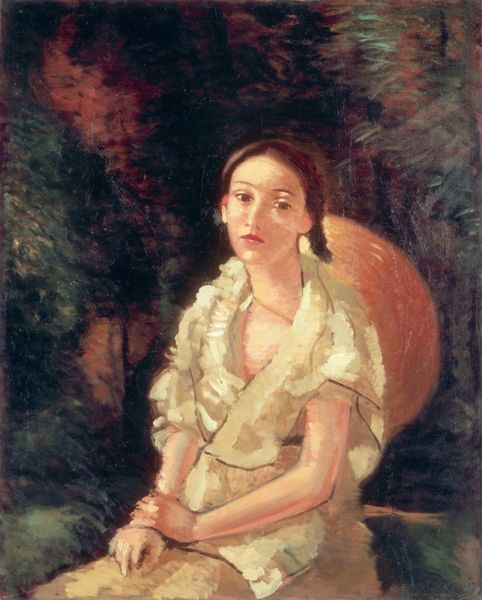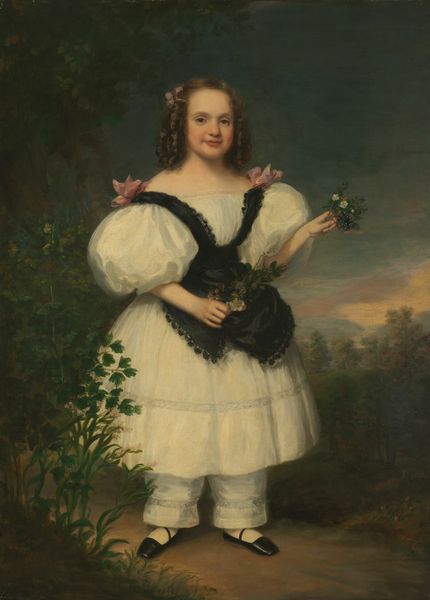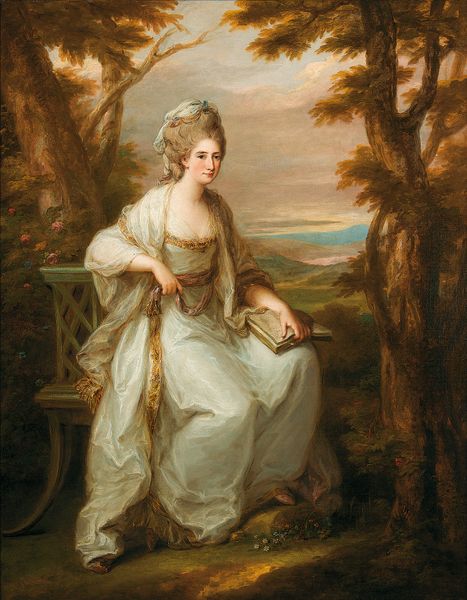
painting, oil-paint
#
portrait
#
gouache
#
fantasy art
#
painting
#
oil-paint
#
landscape
#
figuration
#
romanticism
#
watercolour illustration
#
genre-painting
#
watercolor
Dimensions: 30 x 25 in. (76.2 x 63.5 cm)
Copyright: Public Domain
Editor: Washington Allston’s "The Spanish Girl in Reverie," created in 1831 and housed at the Metropolitan Museum of Art, is quite striking. The figure, set against a misty landscape, seems lost in thought, but it's the color palette that really draws me in – those deep reds against the ethereal background create such a contemplative mood. What do you see in this piece? Curator: I see a fascinating convergence of the personal and the archetypal. The 'Spanish Girl' herself is a cipher, really, but the choice of costume is interesting. This recalls idealized pastoral figures from centuries before – she is suspended outside her everyday context, which allows her reverie to connect to something larger, more universal. What does the term 'Spanish' evoke for you? Editor: Exoticism, perhaps? A sense of romantic otherness? Curator: Exactly. "Spanish" here acts as a signifier of the exotic and the romantic, pulling from a rich tapestry of cultural fantasies woven in Northern Europe throughout the 18th and 19th centuries. How does her placement in nature, those misty mountains, contribute to this reading? Editor: The landscape blurs the line between reality and dream. She's physically present, but the setting feels otherworldly, enhancing her state of contemplation. Curator: Precisely! The hazy peaks resonate with the limitless scope of inner life. There's a Jungian interplay here - between her individual psyche and the collective unconscious. Does that symbolism enhance your experience? Editor: Absolutely! I initially saw a pretty picture. But now it seems far more complex. Thank you! Curator: The pleasure is mine. These reveries become cultural touchstones precisely because they allow us to tap into shared wells of human experience.
Comments
No comments
Be the first to comment and join the conversation on the ultimate creative platform.
